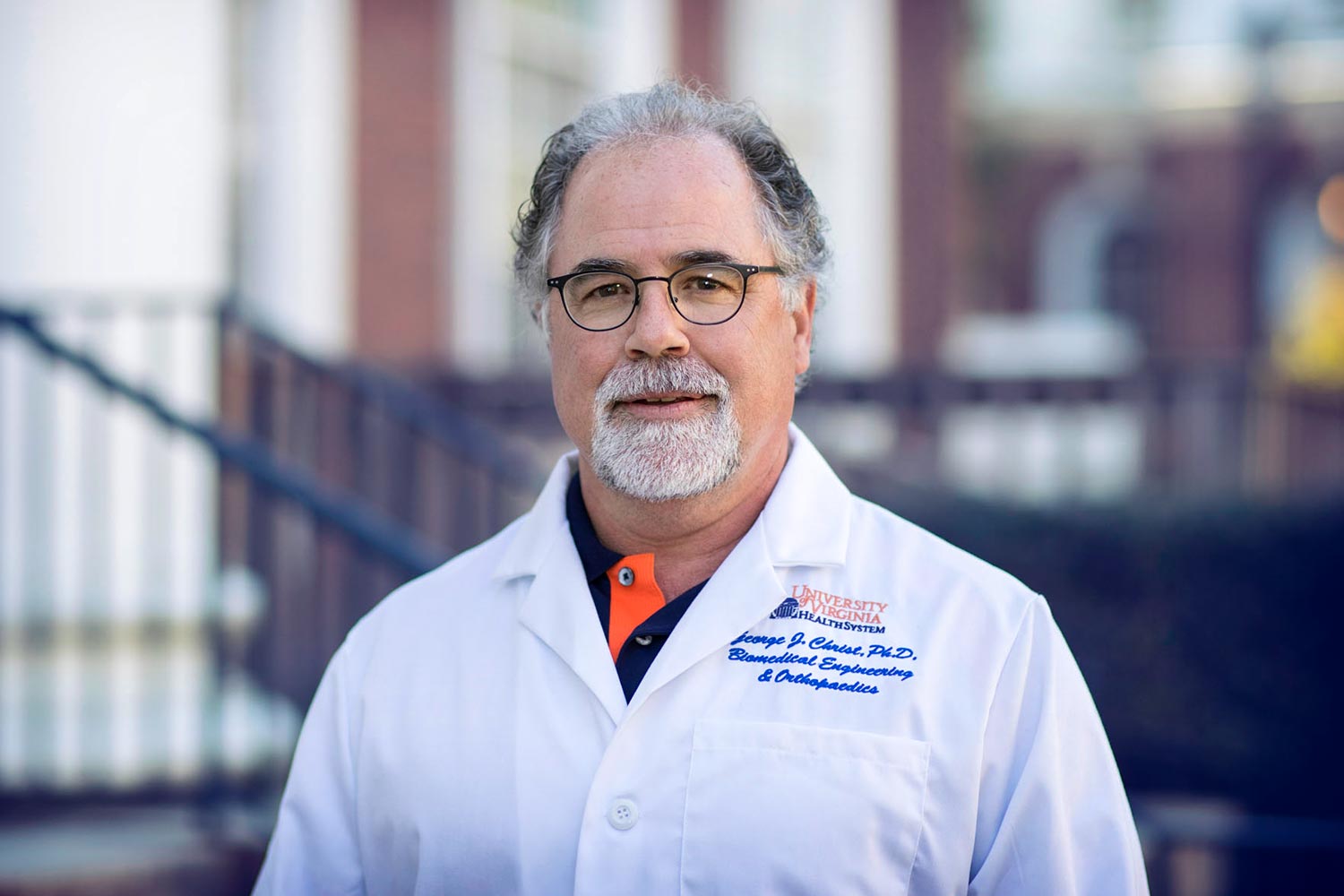The University of Virginia’s Center for Advanced Biomanufacturing on Monday will bring together experts from industry, government and academia to learn from each other in an emerging field of medical engineering, an area in which UVA is developing considerable cross-disciplinary expertise. (For information, or to register, click here.)
What is advanced biomanufacturing? Imagine that someday a lost limb could be replaced through the regeneration and creation of skin, bone and muscle tissue, perhaps combined with some form of body-friendly synthetic materials. Or that an organ could be grown or built, and implanted in the human body to replace a diseased or injured organ.
Sound farfetched? All of that is in the “someday” realm of possibility. But a great deal of learning will need to be accomplished first.
UVA’s Department of Biomedical Engineering, which is housed within both the Medical School and the School of Engineering and Applied Science, on Friday celebrates its 50th anniversary and is poised to push forward the field of advanced biomanufacturing.
George Christ, a UVA professor of biomedical engineering and orthopedic surgery, and co-director (with Shayn Peirce-Cottler, a UVA professor of biomedical engineering and plastic surgery) of UVA’s new $3 million Center for Advanced Biomanufacturing, explains.
Q. What is the goal of the symposium?
A. We are bringing together experts from around the country to discuss innovative research in biofabrication and cell manufacturing, how we can gain more government funding for this important basic and applied research, and how we can work together within the University and with other organizations to move this field forward toward commercialization.
Our goal is to eventually create a viable advanced biomanufacturing industry in the United States. This will be beneficial to wounded military people, accident survivors and cancer victims.
Q. What is UVA doing in the field of biomanufacturing?
A. We are developing processes from many angles, with collaboration and expertise from several disciplines in the schools of Engineering and Medicine – cell and tissue engineering, orthopedics, advanced materials, chemical engineering and regenerative medicine.
We also have a great deal of data science and computational modeling expertise at the University, brought together through our Data Science Institute and Engineering School and important to exploring and advancing regenerative medicine technologies.
Additionally, we have one of the best 3-D bioprinter facilities in the nation, which allows us to “print” living cells onto substrates and grow them into potentially usable replacement tissues for damaged skin, muscle or organs. We are primed for big leaps, with the goal to eventually fabricate full organs.
And we are seeking FDA approval of two Defense Department-funded clinical trials in tissue engineering. One involves using muscle stem cells to repair cleft lip, and in the other we hope to repair traumatic injuries to leg muscles using protein from human hair.
Q. The center has recently joined a new national biomanufacturing institute. Tell us about that.
A. As a result of our multi-faceted expertise and infrastructure in this broad field, UVA was invited to join a national organization, the Advanced Regenerative Manufacturing Institute, which is co-sponsoring our symposium. That institute – made up of about 100 partners in industry, government, academia and the non-profit sector – brings nearly $300 million in public and private investment into play, dedicated to developing manufacturing processes for engineered tissues and organs, with benefits to patients as the end point. The Department of Defense, which has a particular interest in this work, is providing about $80 million to the effort.
More than 52,000 U.S. soldiers are disfigured with combat injuries suffered in the wars in Afghanistan and the Middle East since 9/11. Most of their injuries are to the head, neck and extremities, caused by explosions. The average age of these soldiers is 26 years. It’s really imperative that we develop in reasonable time truly innovative treatments that provide long-term improvements to their health, mobility and well-being.

When you meet these wounded warriors, who have given so much, it really is compelling to seek new and long-term ways to treat and heal their injuries. And these same therapies will apply to the civilian population as well.
Q. What are the challenges you face in this field?
A. Much of the work accomplished so far in this field has been by individuals or small groups working independently. We now have an opportunity to bring these people together to build on our individual areas of expertise and to share what we’ve learned.
Making an organ, such as a kidney or heart, is different from making a new arm or leg, and certainly more difficult than mass-manufacturing aspirin. There aren’t standard processes for manufacturing on large scales all the cells and tissues and biomaterials, and their combinations, required for repairing or making limbs and organs.
By working together, we can create the roadmap for building reproducible biomanufacturing processes. We can make advances that will transform this research from labs and trials to actual health care.
We also have to train our young researchers to work at the boundaries of the disciplines through co-mentorships. We need to develop a workforce in this field that operates at the intersections of medicine, engineering and the basic sciences.
To get the kinds of results we are seeking in this extremely challenging area, we have to do things differently than we have done them in the past. We tell our students that they have to learn to become comfortable being uncomfortable.
Media Contact
Article Information
November 2, 2017
/content/growing-replacement-limbs-or-organs-researchers-meet-compare-notes

